41 histogram labels in r
How to label histogram bars with data values or percents in R hist (islands, col="gray", labels = TRUE, ylim=c (0, 45)) Getting percentages is a bit more involved. The only way I know to do that it to directly manipulate the object returned by a call to hist (), as described in a bit more detail in my answer to this similar question: histPercent <- function (x, ...) How to Specify Histogram Breaks in R (With Examples) If you use the hist () function in R, Sturges' Rule will be used to automatically choose the number of bins to display in the histogram. hist (data) Even if you use the breaks argument to specify a different number of bins to use, R will only use this as a "suggestion" for how many bins to use. hist (data, breaks=7)
How to Make a Histogram with Basic R Tutorial | DataCamp This code computes a histogram of the data values from the dataset AirPassengers, gives it "Histogram for Air Passengers" as title, labels the x-axis as "Passengers", gives a blue border and a green color to the bins, while limiting the x-axis from 100 to 700, rotating the values printed on the y-axis by 1 and changing the bin-width to 5.
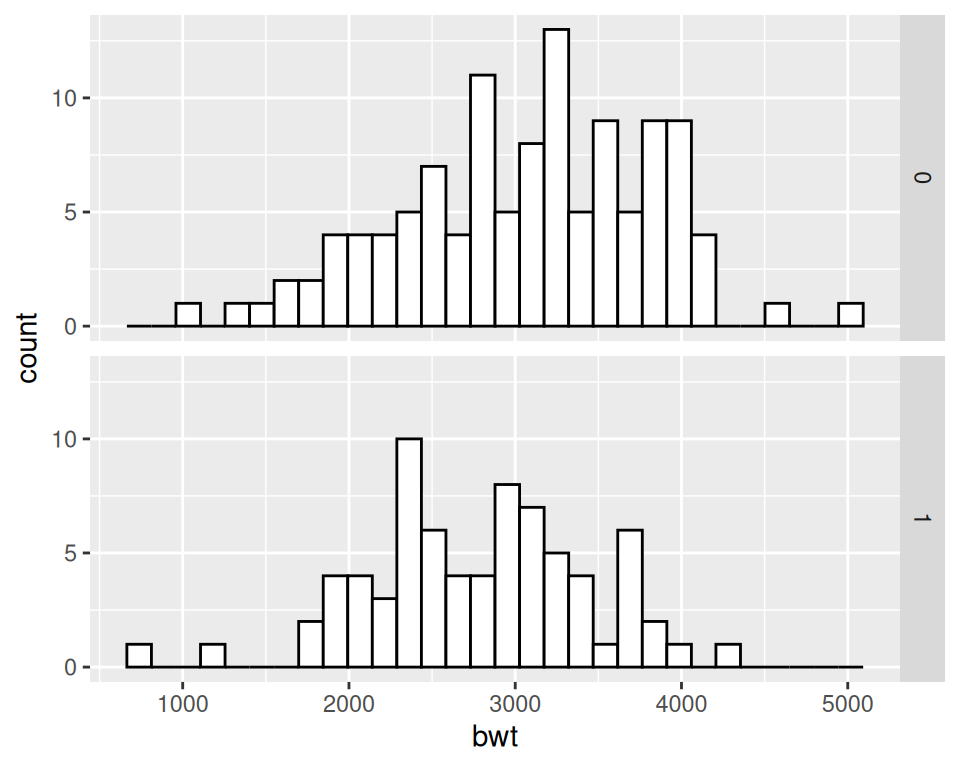
Histogram labels in r
HISTOGRAM in R ⚡ [CREATE, CUSTOMIZE, BINS, ADD CURVES, ...] You can plot a histogram in R with the histfunction. By default, the function will create a frequency histogram. hist(distance, main = "Frequency histogram") # Frequency However, if you set the argument probto TRUE, you will get a density histogram. hist(distance, prob = TRUE, main = "Density histogram") # Density stackoverflow.com › questions › taggedNewest 'r' Questions - Stack Overflow R is a free, open-source programming language & software environment for statistical computing, bioinformatics, visualization & general computing. Please use minimal reproducible example(s) others can run using copy & paste. Show desired output. Use dput() for data & specify all non-base packages with library(). Labels in Histograms - RStudio Community amount_of_sugar_in_cakes = rnorm (1000,37,5) hist (amount_of_sugar_in_cakes, labels = TRUE, xlab = "Amount of Sugar in Cake grams", ylab = "Number of Cakes", breaks=100, main = "Distribution of Sugar in Cakes: You Dislike Anything with more than 27 grams of Sugar") Does anyone know why the labels on the x-axis and the y-axis are not showing up?
Histogram labels in r. Add custom tick mark labels to a plot in R software Hide tick marks. To hide or to show tick mark labels, the following graphical parameters can be used :. xaxt: a character specifying the x axis type; possible values are either "s" (for showing the axis) or "n" ( for hiding the axis); yaxt: a character specifying the y axis type; possible values are either "s" (for showing the axis) or "n" ( for hiding the axis) hist function - RDocumentation If right = TRUE (default), the histogram cells are intervals of the form (a, b], i.e., they include their right-hand endpoint, but not their left one, with the exception of the first cell when include.lowest is TRUE. For right = FALSE, the intervals are of the form [a, b) , and include.lowest means ' include highest '. How to Create a Histogram with Different Colors in R - Statology Often you may want to create a histogram that has several different colors in R. The following examples show how to do so in base R and in ggplot2 . Example 1: Histogram with Different Colors in Base R Histograms in R language - GeeksforGeeks We can create histogram in R Programming Language using hist () function. Syntax: hist (v, main, xlab, xlim, ylim, breaks, col, border) v: This parameter contains numerical values used in histogram. main: This parameter main is the title of the chart. col: This parameter is used to set color of the bars. xlab: This parameter is the label for ...
R - Histograms - tutorialspoint.com R - Histograms, A histogram represents the frequencies of values of a variable bucketed into ranges. Histogram is similar to bar chat but the difference is it groups the values ... A simple histogram is created using input vector, label, col and border parameters. The script given below will create and save the histogram in the current R ... Tutorial of Histogram in R Programming Language with Examples Syntax of Histogram hist() function in R. The basic syntax of hist() function is as follows - hist(v, main, xlab, xlim, ylim, breaks, col, border) v: This is the numerical values or data for which histogram is needed; main: Used for giving title to the chart. col: Used for setting the color of the bars. xlab: Used to label for the horizontal ... Draw Histogram with Different Colors in R (2 Examples) In this article you'll learn how to plot a histogram with multiple colors in the R programming language. The article contains the following content: 1) Creation of Example Data. 2) Example 1: Draw Histogram with Different Colors Using Base R. 3) Example 2: Draw Histogram with Different Colors Using ggplot2 Package. 4) Video & Further Resources. How to Make Stunning Histograms in R: A Complete Guide with ggplot2 - R ... A histogram is a way to graphically represent the distribution of your data using bars of different heights. A single bar (bin) represents a range of values, and the height of the bar represents how many data points fall into the range. You can change the number of bins easily. The easiest way to understand them is through visualization.
how to add data labels to geom_histogram - RStudio Community below is my code. ggplot (data,mapping=aes (x=Annualized.Sick.Days,y=..count..,label=..count..,fill=Direct.Indirect))+ geom_histogram (binwidth=10,color="white")+ scale_x_continuous (breaks = seq (30, 100, 10), lim = c (30, 100))+ theme_classic2 () + geom_text (stat="bin", size=2,vjust=0) Add Count and Percentage Labels on Top of Histogram Bars in R hist (…, labels=TRUE,..) Example: R set.seed(67832) xpos <- rnorm(50) hist(xpos , labels = TRUE, ylim=c(0,20)) Output The percentage can be computed using mathematical functions. Initially, the histogram without any labels is stored in a variable. Its counts can be accessed using the counts attribute of the extracted histogram variable. Create a Histogram in Base R (8 Examples) | hist Function Tutorial As you can see based on the RStudio console output, the hist function returns a lot of information on our histogram, i.e. breaks, counts, density, mids, xname, equidist, and attr. You may have a look at the help documentation of the hist function to learn more about these information. ggplot2 histogram plot : Quick start guide - R software and data ... GGPlot2 Essentials for Great Data Visualization in R Prepare the data The data below will be used : set.seed(1234) df <- data.frame( sex=factor(rep(c("F", "M"), each=200)) , weight=round(c(rnorm(200, mean=55, sd=5), rnorm(200, mean=65, sd=5))) ) head(df) ## sex weight ## 1 F 49 ## 2 F 56 ## 3 F 60 ## 4 F 43 ## 5 F 57 ## 6 F 58 Basic histogram plots
statisticsglobe.com › ggplot2-histogram-in-r-geomCreate ggplot2 Histogram in R (7 Examples) | geom_histogram ... Figure 1: Basic ggplot2 Histogram in R. Figure 1 visualizes the output of the previous R syntax: A histogram in the typical design of the ggplot2 package. In the following examples I’ll explain how to modify this basic histogram representation. So keep on reading! Example 2: Main Title & Axis Labels of ggplot2 Histogram
How to apply manually created x-axis labels in a histogram created by ... More Detail. When we generate a histogram in R using hist function, the x-axis labels are automatically generated but we might want to change them to values defined by researchers or by any other authority. Therefore, firstly we need to create the histogram by ignoring the labels and then axis function can be used for new values.
How to Make a Histogram with Basic R | R-bloggers hist(AirPassengers, las=1) #Histogram of the AirPassengers dataset with the y-values projected horizontally According to whichever option you choose, the placement of the label will differ: if you choose 0, the label will always be parallel to the axis (which is the default); If you choose 1, the label will be put horizontally.
› r-programming › histogramR hist() to Create Histograms (With Numerous Examples) Example 3: Use Histogram return values for labels using text () h <- hist (Temperature,ylim=c (0,40)) text (h$mids,h$counts,labels=h$counts, adj=c (0.5, -0.5)) Defining the Number of Breaks With the breaks argument we can specify the number of cells we want in the histogram. However, this number is just a suggestion.
2.4 Creating a Histogram | R Graphics Cookbook, 2nd edition Figure 2.9: ggplot2 histogram with default bin width (left); With wider bins (right) When you create a histogram without specifying the bin width, ggplot () prints out a message telling you that it's defaulting to 30 bins, and to pick a better bin width. This is because it's important to explore your data using different bin widths; the ...
r-graphics.org › recipe-distribution-multi-hist6.2 Making Multiple Histograms from Grouped Data - R Graphics This cookbook contains more than 150 recipes to help scientists, engineers, programmers, and data analysts generate high-quality graphs quickly—without having to comb through all the details of R’s graphing systems. Each recipe tackles a specific problem with a solution you can apply to your own project and includes a discussion of how and why the recipe works.
statsandr.com › blog › graphics-in-r-with-ggplot2Graphics in R with ggplot2 - Stats and R Aug 21, 2020 · Histogram. A histogram (useful to visualize distributions and detect potential outliers) can be plotted using geom_histogram(): ggplot(dat) + aes(x = hwy) + geom_histogram() By default, the number of bins is equal to 30. You can change this value using the bins argument inside the geom_histogram() function:
› histogram-in-rLearn How to Create a Histogram Using R Software - EDUCBA R uses hist () function to create histograms. This hist () function uses a vector of values to plot the histogram. Histogram comprises of an x-axis range of continuous values, y-axis plots frequent values of data in the x-axis with bars of variations of heights. Syntax: The syntax for creating histogram is
R Histogram - Base Graph - Learn By Example In R, you can create a histogram using the hist() function. It has many options and arguments to control many things, such as bin size, labels, titles and colors. ... labels: If TRUE, draws labels on top of bars: density: The density of shading lines: angle: The slope of shading lines: col: A vector of colors for the bars:
epirhandbook.com › en › epidemic-curves32 Epidemic curves | The Epidemiologist R Handbook The histogram bin breaks are defined with seq.Date() as explained above to begin the Monday before the earliest case and to end the Monday after the last case; The interval of date labels is specified by date_breaks = within scale_x_date() The interval of minor vertical gridlines between date labels is specified to date_minor_breaks =
Data Visualization with R - Histogram - Rsquared Academy Labels. In certain cases, we might want to add the frequency counts on the histogram bars. It is easier for the user to know the frequencies of each bin when they are present on top of the bars. Let us add the frequency counts on top of the bars using the labels argument. We can either set it to TRUE or a character vector containing the label ...
Histogram in R Programming - Tutorial Gateway Let us see how to Create a Histogram, Remove its Axes, Format its color, add labels, add the density curves, and make multiple Histograms in R Programming language with an example. Create Histogram Syntax The syntax to create the Histogram in R Programming is hist (x, col = NULL, main = NULL, xlab = xname, ylab)
Labels in Histograms - RStudio Community amount_of_sugar_in_cakes = rnorm (1000,37,5) hist (amount_of_sugar_in_cakes, labels = TRUE, xlab = "Amount of Sugar in Cake grams", ylab = "Number of Cakes", breaks=100, main = "Distribution of Sugar in Cakes: You Dislike Anything with more than 27 grams of Sugar") Does anyone know why the labels on the x-axis and the y-axis are not showing up?
stackoverflow.com › questions › taggedNewest 'r' Questions - Stack Overflow R is a free, open-source programming language & software environment for statistical computing, bioinformatics, visualization & general computing. Please use minimal reproducible example(s) others can run using copy & paste. Show desired output. Use dput() for data & specify all non-base packages with library().
HISTOGRAM in R ⚡ [CREATE, CUSTOMIZE, BINS, ADD CURVES, ...] You can plot a histogram in R with the histfunction. By default, the function will create a frequency histogram. hist(distance, main = "Frequency histogram") # Frequency However, if you set the argument probto TRUE, you will get a density histogram. hist(distance, prob = TRUE, main = "Density histogram") # Density








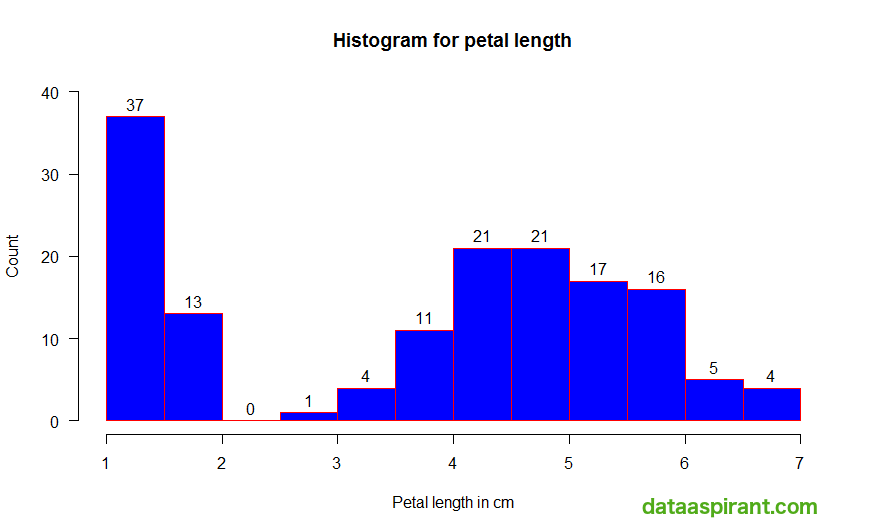








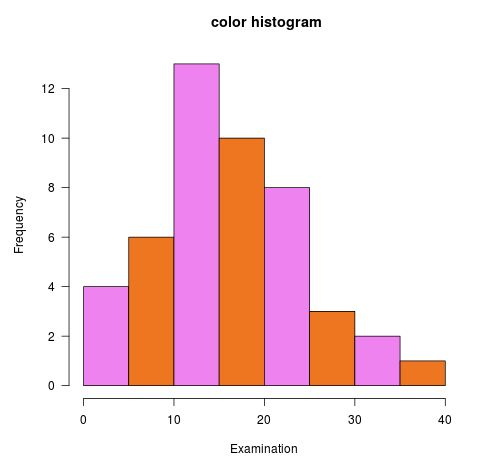



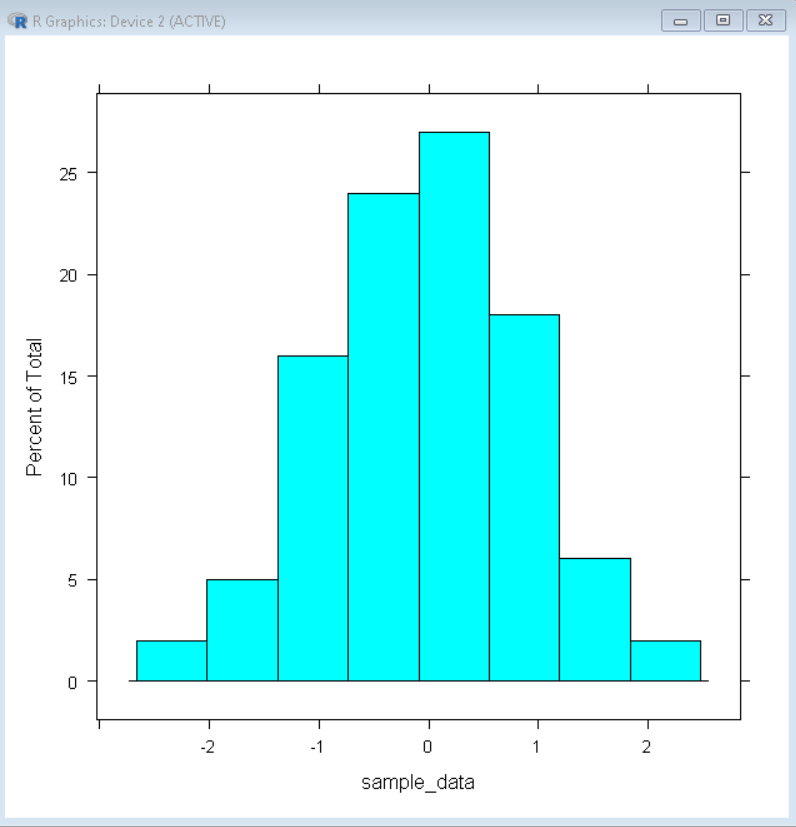




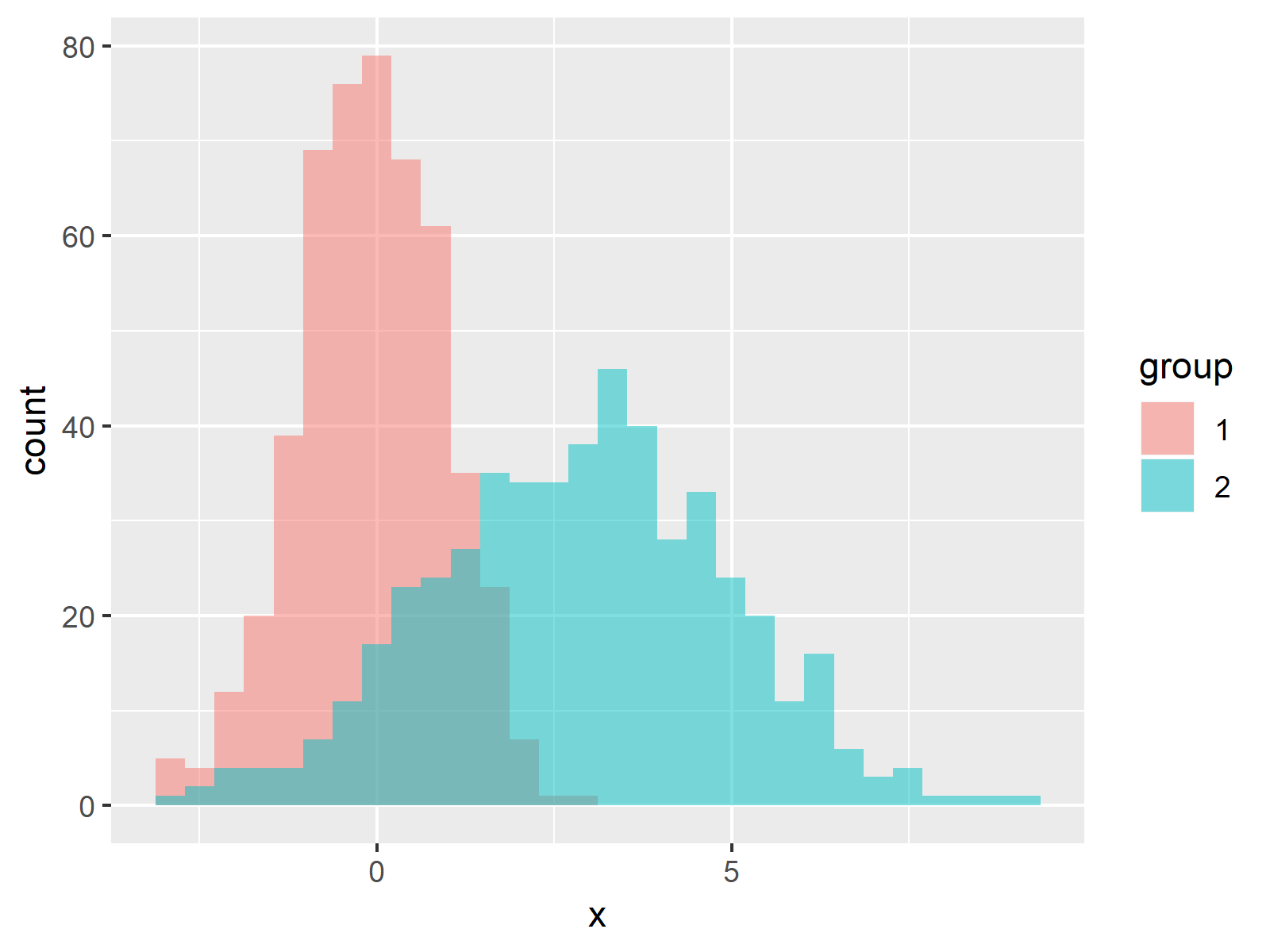
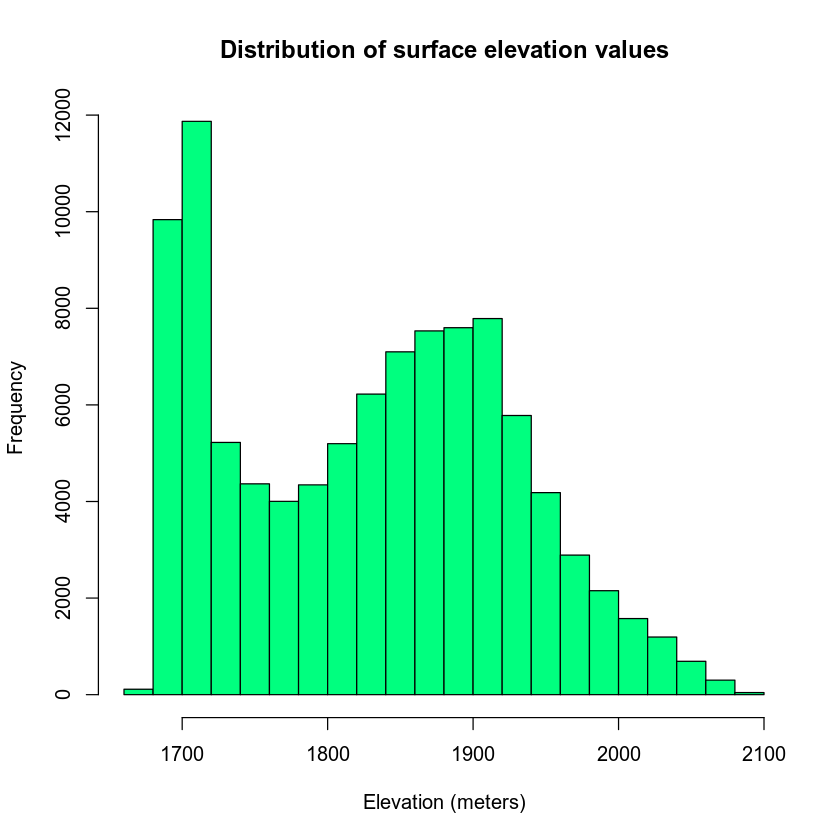

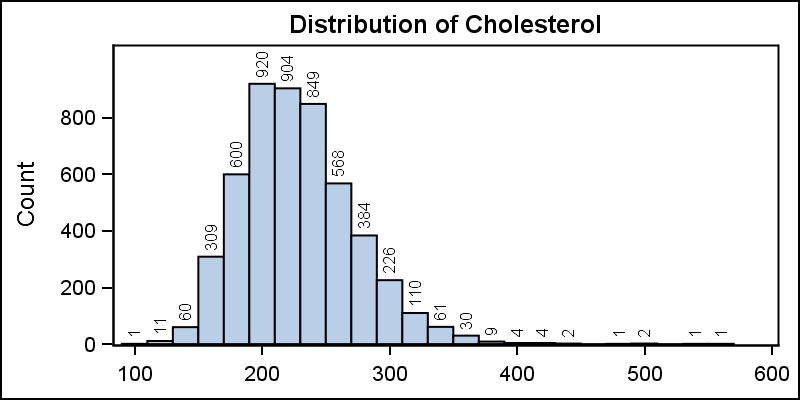

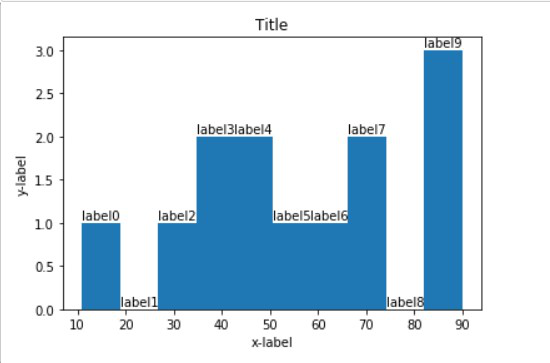
Post a Comment for "41 histogram labels in r"